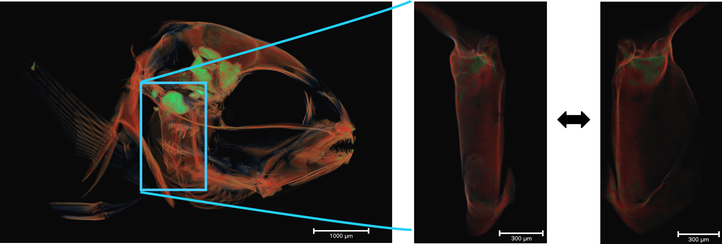Opercular deformities in gilthead seabream (Sparus aurata)
Project focus
Skeletal deformities, one of the major threats for aquaculture, have been studied extensively. This includes opercular malformations in gilthead sea bream (Sparus aurata), a Mediterranean food-fish species. This type of skeletal deformities can significantly affect the fish by decreasing its growth rate and the commercial value of the product’s market size. In this project, the multi-methodologies (clearing-and-staining, histological sectioning, X-ray micro-computed tomography technique, graphical 3D-reconstructions and geometric morphometrics) have been applied to characterizing factors involved in skeletogenesis and opercular deformities, by analyzing and comparing bone tissue and bone mineralization in normal and abnormal sea bream larvae. First, we worked out the most suitable histological protocol for characterizing different components of the bone tissue. Second, the quantification of bone mineralization density levels was investigated for providing insights in the mechanism behind opercular abnormalities. Third, we described an abnormal ectopically mineralized structure (EMS) that was found inside the skull of a abnormal larva for exploring whether there is a link with the presence of the opercular deformities and the EMS formation. Finally, we will perform phenotypic assessments in relation to different nutritional treatments, for improving sea bream larvae rearing methods at early stages (7-61 days post hatching).
Reconstruction of µCT-scanned Sparus aurata (61 days post hatching) showing opercular deformation in both left and right sides.
Keywords
Skeletal deformities, opercular deformities, clearing-and-staining, histology, gilthead sea bream, Sparus aurata, bone mineralization density, micro-computed tomography, ectopically mineralized structure
Researchers: Thuong Phuc Nguyen, Vincent Vermeylen, Dominique Adriaens (PI)
